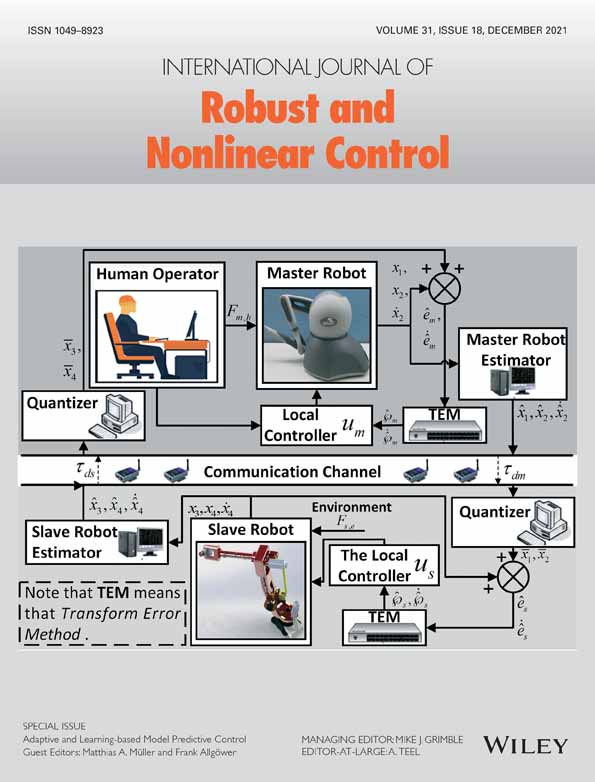Improved fault detection and control allocation for hypersonic re-entry vehicle subject to intermittent fault and disturbance
Abstract
This study investigates the nonlinear fault detection and control allocation of a hypersonic re-entry vehicle with intermittent faults and disturbances. The uncertain external disturbances in the inner loop system are processed on the basis of the studied intermittent fault mode. A set of residuals is generated by sliding time windows, and two hypothesis tests based on the residual mean are proposed to detect the appearance and disappearance of faults. An augmented observer is used to estimate the faults subject to the  -gain disturbance rejection constraint. A nonlinear backstepping fault-tolerant control is designed to generate the desired control torque and make the output attitude track the given signal. An optimization control allocation algorithm distributes the desired torque to aerodynamic surfaces and reaction control system jets. The stability of the schemes is analyzed by Lyapunov and linear matrix inequality theories. Numerical simulation and rapid prototyping results are presented to demonstrate the validity of the proposed methods.
-gain disturbance rejection constraint. A nonlinear backstepping fault-tolerant control is designed to generate the desired control torque and make the output attitude track the given signal. An optimization control allocation algorithm distributes the desired torque to aerodynamic surfaces and reaction control system jets. The stability of the schemes is analyzed by Lyapunov and linear matrix inequality theories. Numerical simulation and rapid prototyping results are presented to demonstrate the validity of the proposed methods.
CONFLICT OF INTEREST
The authors declare that there is no conflict of interest regarding the publication of this article.




